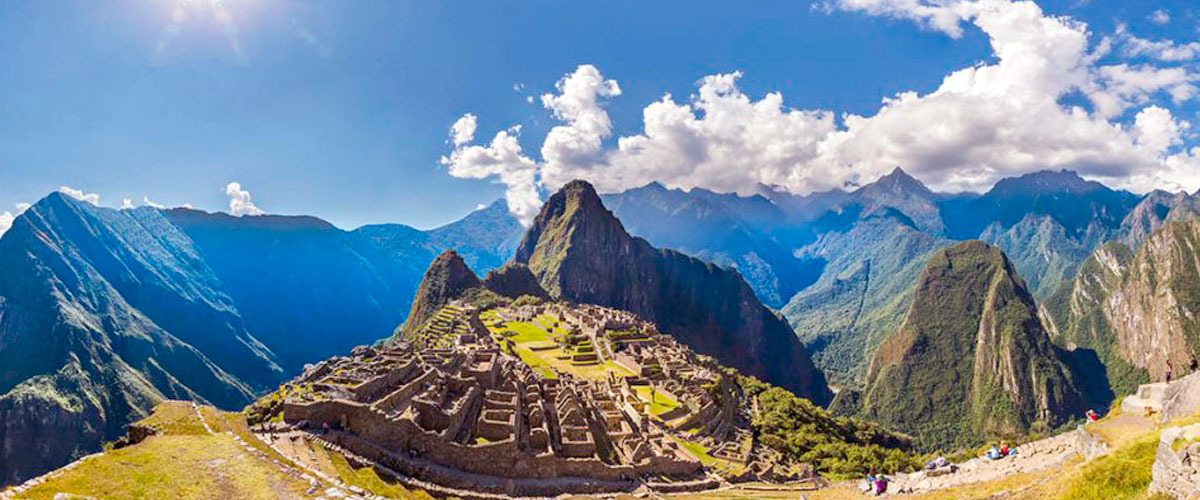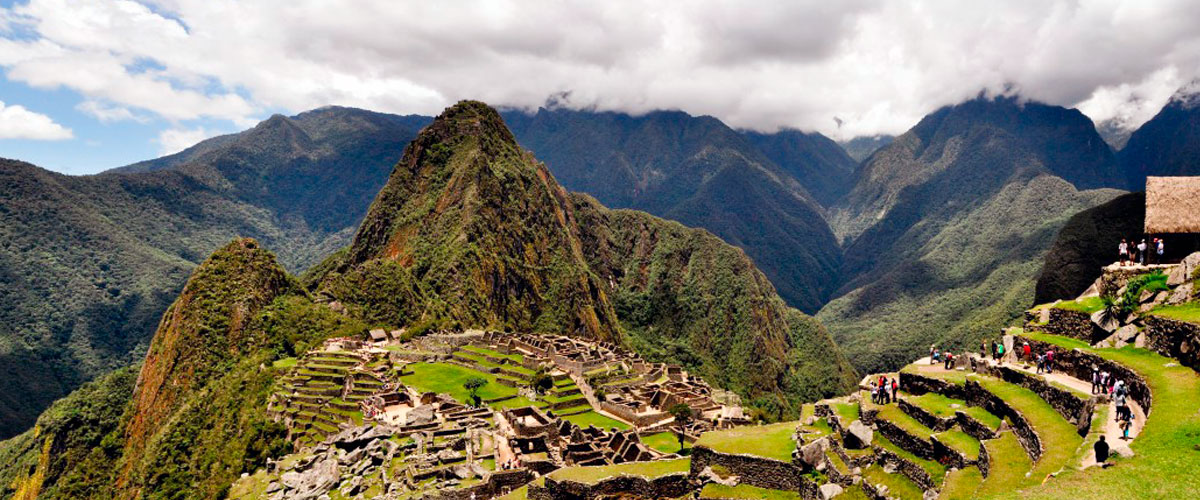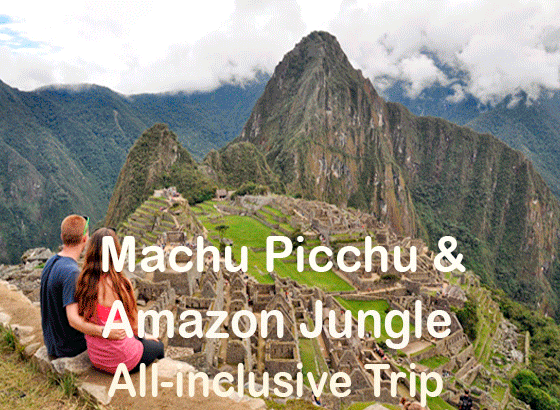MACHU PICCHU: The Iconic Inca Building in Peru

Join us on a journey to one of the world’s most captivating wonders! Machu Picchu, an awe-inspiring Inca citadel nestled in the Peruvian Andes, offers breathtaking views and unforgettable experiences. Rich in history and architectural marvels, it stands as a testament to the ingenuity and mastery of the Inca civilization. With its UNESCO World Heritage site status, Machu Picchu is a cultural treasure that will leave a lasting impression on every visitor. Let’s explore the wonders of this ancient civilization, the citadel in the Andes, and its significance as a Peruvian wonder and travel destination.
Key Takeaways
- Discover the rich history and architectural marvels of Machu Picchu, an Inca citadel nestled in the Peruvian Andes.
- Explore the ancient civilization of the Incas and learn about their cultural significance.
- Experience breathtaking views and unforgettable experiences in this UNESCO World Heritage site.
- Learn about the different Machu Picchu trips and plan your adventure to this extraordinary destination.
- Understand the significance of Machu Picchu’s connection to Cusco, the historical capital of the Inca Empire.
Unearthing the Inca Ruins
As we venture into the world of Inca ruins, the ancient architecture and remarkable craftsmanship found in Machu Picchu come to light. These captivating structures, built by the Inca civilization, continue to intrigue and amaze visitors from all over the world.
The Inca ruins at Machu Picchu showcase a fascinating blend of creativity and engineering marvels. The stone walls, terraces, and temples are testament to the expert masonry skills of the Inca people. Understanding the significance behind these structures offers a glimpse into the rich cultural heritage of Peru.
| Craftsmanship | Significance |
|---|---|
| – The stones are perfectly fitted together without the use of mortar, cement or modern tools, which creates a structure that is earthquake-resistant and long-lasting. | – The structures were not only used for ceremonial purposes, but also served as administrative and residential areas for the Inca nobility. The citadel was also a strategic location for trade and communication. |
| – The intricate designs on the walls reflect the Inca’s spiritual beliefs and capture moments from their daily lives. | – The strategic location of Machu Picchu and its access to water supply made it an ideal site for agriculture, which was necessary for provisioning the Inca Empire. |
| – The terraces are ingeniously designed to adapt to the steep terrain and were used to grow crops, especially maize, a staple food of the Inca people. | – After the Spanish Conquest, Machu Picchu was abandoned and remained forgotten for centuries, until it was rediscovered by Hiram Bingham in 1911. Its rediscovery has contributed to the revival of the indigenous culture and heritage of the Inca Empire. |
Another fascinating aspect of the Inca ruins at Machu Picchu is its connection to the city of Cusco, the historical capital of the Inca Empire. The impressive stonework and architectural designs found in Machu Picchu are similar to those found in Cusco, suggesting a strong cultural and artistic influence between the two sites.
Unearthing the Inca ruins at Machu Picchu provides a unique opportunity to appreciate the ancient architecture and the culture and history of the Inca civilization.
The Enigmatic Citadel in the Andes
Visiting Machu Picchu is a once-in-a-lifetime opportunity to explore an enigmatic citadel set amidst the breathtaking landscapes of the Andes. This ancient site is a testament to the remarkable engineering feats achieved by the Inca civilization. Its seamless integration with natural surroundings makes it an awe-inspiring wonder and a true masterpiece.
The citadel in the Andes holds deep cultural significance and its designation as a UNESCO World Heritage site further underscores its importance. Machu Picchu is shrouded in mystery, with much still unknown about its construction and purpose.
“The perfect harmony, achieved through the skill and creativity of the Inca people, makes Machu Picchu an unequaled masterpiece of architecture and technology.”
The Wonders of Ancient Inca Technology
The stonework of Machu Picchu represents a true marvel of ancient technology. The construction of buildings, terraces, and aqueducts, among other things, demonstrates the exceptional skill and knowledge of the Inca architects and engineers. The materials used for the construction were sourced from the nearby quarries and were transformed into polished surfaces without the use of mortar.
What’s even more intriguing is that no wheels were used to transport the rocks to the site. Instead, the Inca people used rollers and man-power to move the stones, highlighting the exceptional strength and physical ability of these ancient people.
Mysteries of the Citadels
There is still much to be discovered about Machu Picchu and its mysteries. Theories abound about the specific function of the site, with some suggesting it was a royal palace, while others believe it to be designed as a religious center.
Regardless of its true purpose, visiting Machu Picchu is an unforgettable experience, inspiring a sense of wonder and amazement that will stay with you long after your trip has ended.
A Glimpse into the Ancient Civilization
Our journey to Machu Picchu takes us back in time to discover the ancient civilization that once thrived here. The Inca ruins in Machu Picchu provide us with a unique glimpse into the Inca culture, their religious beliefs, societal structure, and the significance of this UNESCO World Heritage site.
By exploring the historical context that led to the rise and fall of the Inca Empire, we gain insight into how Machu Picchu played a role in this fascinating story. The strategic location of this sacred site suggests a deeper significance beyond its stunning architectural beauty.
| Civilization | Religious Beliefs | Societal Structure |
|---|---|---|
| – The Inca civilization | – Inca religion centered on the worship of Inti, the sun god, and other deities. They believed that the Apus (mountains) had spirits and communicated with their gods through rituals and offerings. | – The Inca society was structured as a hierarchy, with the Emperor at the top. Most people were farmers, while the rich were often artisans or traders. |
As we explore Machu Picchu’s ancient architecture, we gain a deeper appreciation for the Inca’s remarkable craftsmanship and engineering expertise. The significance of each structure we uncover tells a compelling story of a civilization that remains enigmatic and fascinating to this day.
Join us on this journey to Machu Picchu to uncover the secrets of this ancient civilization and the wonder that continues to attract visitors from around the world.
Discovering the UNESCO World Heritage Site
As we have already mentioned, Machu Picchu is much more than just a breathtaking travel destination – it is a UNESCO World Heritage site and a symbol of Peru’s cultural heritage. This recognition is a testament to the extraordinary significance that Machu Picchu holds for humanity, as it serves as a window to a bygone era and offers a glimpse into the mysterious and complex Inca civilization.
Preserving this priceless treasure requires dedicated efforts aimed at safeguarding its unique historical and cultural significance. Machu Picchu has faced several challenges, including natural deterioration, tourist pressures, and other factors that threaten its integrity. However, numerous measures aimed at protection, conservation, and restoration have been implemented by the Peruvian government and other organizations.
The importance of preserving Machu Picchu goes beyond ensuring its structural integrity and physical survival. This UNESCO World Heritage Site represents the cultural heritage of an entire people and carries a value that transcends borders and nations. By promoting the preservation and appreciation of Machu Picchu, we can contribute to the celebration of Peru’s cultural identity and recognition of its unique place in the world’s cultural heritage.

Machu Picchu as a Cultural Wonder
It is hard to overstate the cultural significance of Machu Picchu, which continues to inspire wonder and admiration in all who visit it. This ancient ruin is not just a historical site or an architectural masterpiece – it embodies the unique cultural legacy of the Inca civilization and reflects the profound spiritual and cosmological beliefs that informed their world view.
Machu Picchu is a testament to human creativity, resilience, and the power of imagination. It stands as a symbol of human achievement and serves as a reminder of the ingenuity and innovation that can emerge from the most challenging circumstances. Whether you are a history buff, an architecture enthusiast, or just a curious traveler, you will find in Machu Picchu a cultural wonder that is both timeless and transformative.
“Machu Picchu is a window to a bygone era and offers a glimpse into the mysterious and complex Inca civilization.”
The Role of Machu Picchu in Peruvian Heritage
Machu Picchu is not only a cultural treasure for the world but also represents an essential marker of Peru’s national identity and heritage. The Inca Empire, of which Machu Picchu is just one testament, has shaped and influenced Peruvian society and culture for centuries, and remains a vital source of inspiration and pride for the Peruvian people.
The preservation and promotion of Machu Picchu thus carry significant implications for the safeguarding and dissemination of Peru’s heritage and history. By recognizing the cultural and historical value of Machu Picchu, we can contribute to a shared understanding of the country’s past and present, and build bridges of solidarity, respect, and mutual appreciation across borders and cultures.
The Legacy of Machu Picchu for Future Generations
Finally, preserving Machu Picchu is not just about protecting the cultural heritage of the past but also ensuring a sustainable future for generations to come. Machu Picchu serves as an excellent example of how we can balance tourism and economic development with ecological sustainability and cultural preservation.
Through responsible tourism practices, community outreach, and educational initiatives, we can ensure that Machu Picchu remains a source of inspiration and wonder for visitors from around the world while preserving its unique cultural and ecological heritage. By doing so, we can guarantee that Machu Picchu will continue to enrich the lives of future generations and play a crucial role in shaping Peru’s cultural identity and global reputation.
Gateway to Machu Picchu: Cusco
When planning a trip to Machu Picchu, visiting the nearby city of Cusco is an absolute must. As the former capital of the Inca Empire, Cusco is steeped in rich history and vibrant culture that can be felt around every corner.
Exploring the cobbled streets of Cusco, you’ll discover the city’s stunning architecture, a blend of Incan and Spanish colonial styles, that earned it recognition as a UNESCO World Heritage site. The plazas and markets are alive with colour and activity, with local vendors selling everything from hand-woven textiles and intricate ceramics to traditional Andean delicacies.
| What to do in Cusco: | Where to eat: |
|---|---|
| – Visit the impressive Cusco Cathedral, built on the site of an Incan palace | – Chicha por Gastón Acurio – a restaurant showcasing the best of Peruvian cuisine |
| – Explore the Qorikancha temple, a religious and political center during the Incan era | – Cicciolina – a cozy tapas bar with delicious cocktails and a lively atmosphere |
| Take a stroll around the San Blas neighbourhood, known for its artisan workshops and bohemian vibe | – Limo – an elegant Peruvian-Japanese fusion restaurant for a unique dining experience |
But what really sets Cusco apart is its connection to Machu Picchu, the jewel in Peru’s crown. From Cusco, you can embark on a variety of tours and hikes to reach Machu Picchu, each offering a unique perspective on this spectacular site.
Whether you’re looking to immerse yourself in the magic of the Inca civilization or simply enjoy the breathtaking scenery of the Andes, a visit to Cusco is an unmissable part of any journey to Machu Picchu.
Experiencing the Ancient Architecture
At Machu Picchu, visitors can immerse themselves in the awe-inspiring ancient architecture of the Inca civilization. The precision and ingenuity of the Inca engineering marvels are showcased throughout the ruins, from intricately-carved stone walls to terraces and temples that still stand strong after centuries. As you explore the site, take note of the remarkable design principles behind Machu Picchu.
One of the unique features of Machu Picchu is its seamless integration with its natural surroundings. Nestled amidst the spectacular landscapes of the Andes mountains, the architecture of Machu Picchu was carefully thought out to showcase the natural beauty of the area and make it an even more breathtaking experience for those who visit.
| Architectural Highlights | Description |
|---|---|
| – Terraces | – The agricultural terraces were ingeniously designed to prevent erosion, utilizing drainage and irrigation systems to manage water flow. |
| – Stone walls | – The walls lining Machu Picchu are made from intricately cut and fitted stones, with no mortar used to bind them together. The precision of the stonework is remarkable. |
| – Temple of the Sun | – This is one of the most impressive examples of Inca architecture found on the site. The temple was built to align with the sun during the winter solstice. |
| – Intihuatana stone | – This stone is believed to have been used for astronomical purposes by the Incans and is one of the most unique architectural features of the site. |
As you explore the Inca ruins, take a moment to appreciate the incredible engineering marvels and architectural design prowness of this ancient civilization.
A Journey to the Peruvian Wonder
Embark on an unforgettable journey to discover the Peruvian wonder that is Machu Picchu, a destination that promises to take your breath away. As you hike through the Andes, the surrounding mountains and valleys reveal their awe-inspiring beauty, reminding you of the magnificent natural world that surrounds this ancient wonder. As you traverse the trails, birdsong fills the air as the unique flora and fauna of this region reveal themselves along the way.
Breath-taking Views Beyond Comparison
You may have visited several travel destinations, but the views you encounter in Machu Picchu are beyond comparison. As you make your way through the peaks and valleys, each twist and turn presents a different view of the Peruvian wonder. The stunning Andes Mountains loom in the distance, while the Urubamba River flows through the valley giving way to a lush green landscape. Everywhere you look, there’s a breathtaking sight, and each step reveals something new. You won’t forget this experience anytime soon.
Captivating Scenery that Overwhelms You
The captivating scenery of Machu Picchu is inescapable, and it’s easy to see why it’s one of the most sought-after travel destinations. The natural landscape that surrounds this iconic site stirs up a sense of wonder and awe within visitors, providing them with unforgettable experiences. Machu Picchu’s unique location amidst the Andes Mountains adds to its allure, with a constant sense of the grandeur and majesty of the world you inhabit.

A Sense of Wonder that Overwhelms You
As you make your way through the trails, the stunning views and breathtaking scenery overwhelm you, and you feel an almost child-like sense of wonder. As you explore the Peruvian wonder, there’s a sense of intrigue and mystery that surrounds the site, from the Inca civilization to the stunning natural surroundings. Each step on your journey presents new discoveries and deeper insights into the wonder of this captivating site, leaving you spellbound.
Peru’s Most Iconic Destination: Machu Picchu
As you explore Machu Picchu, you can’t help but gain an appreciation for Peru’s rich culture and history. This iconic destination allows you to connect with the people and customs that shaped Peru’s heritage and the Inca Empire’s legacy. It’s an experience you won’t find anywhere else, with the magic and wonder of Machu Picchu leaving a lasting impression. Make sure to include it on your bucket list as a must-see travel destination.
Machu Picchu Trips: Creating Lasting Memories
If you’re looking for a travel experience that will leave lasting memories, Machu Picchu trips are a must. At SUNRISE PERU TREK travel & Tours, we offer a variety of trips to this beautiful destination, each with its own unique experiences. From trekking the famous Inca Trail to taking a scenic train ride, your journey to Machu Picchu will be packed with adventure and excitement.
Our Machu Picchu trips offer a chance to explore Peru’s rich culture and stunning natural scenery. Whether you’re an experienced hiker or a first-time traveler, we have the trip for you. Our experienced guides will lead you on a journey of discovery, sharing their knowledge of the history and culture of Machu Picchu and its surrounding areas.
Discovering Machu Picchu with SUNRISE PERU TREK Travel & Tours
When you book a Machu Picchu trip with us, you can expect a unique and memorable experience. We offer a range of trips to suit different travel styles and interests, each with its own highlights and activities.
If you’re an adventure enthusiast, our Inca Trail trek is perfect for you. This iconic trek takes you through breathtaking Andean landscapes, stunning valleys, and remote mountain villages before reaching Machu Picchu. You’ll explore ancient ruins, visit traditional communities, and witness some of the most awe-inspiring landscapes in the world.
If you prefer a less demanding trip, our Machu Picchu by Train tour is an excellent choice. This trip takes you on a scenic train ride through the Sacred Valley, passing through colorful towns and lush forests before arriving at Machu Picchu. Along the way, you’ll visit the impressive Ollantaytambo Fortress, the salt mines of Maras, and the agricultural terraces of Moray.
Why Book with SUNRISE PERU TREK Travel & Tours?
At SUNRISE PERU TREK travel & Tours, we pride ourselves on providing exceptional service and unforgettable experiences for our travelers. Our Machu Picchu trips are carefully crafted to ensure a safe, enjoyable, and educational adventure for everyone. With our expert guides, you’ll learn about the history, culture, and natural landscapes of Machu Picchu and its surroundings.
Our trips also offer comfortable accommodations, delicious meals, and top-quality equipment to ensure a comfortable and enjoyable journey. You can rest assured that we have taken care of all the details, so you can focus on immersing yourself in the magic of this beautiful destination.
Book Your Machu Picchu Trip Today
Don’t miss the opportunity to experience the adventure, beauty, and culture of Machu Picchu. Book your trip with [company/agency name] today and embark on a journey that will leave you with memories to last a lifetime. Contact us to learn more about our Machu Picchu trips and start planning your adventure now.
The Cultural Significance of Machu Picchu
When visiting Machu Picchu, one cannot help but marvel at the architectural wonders and natural beauty that surround this Inca citadel. But beyond its breathtaking views and engineering marvels, Machu Picchu holds great cultural significance and continues to serve as an important symbol of indigenous heritage in Peru.
The Inca civilization saw Machu Picchu as a spiritual sanctuary and revered it as a sacred site where important rituals and ceremonies were performed. The site was also believed to be a gateway to the spiritual realm, connecting the earthly world with the gods.
Today, efforts are underway to promote and preserve the cultural heritage of the Inca civilization, with Machu Picchu serving as a symbol of the enduring legacy and strength of indigenous communities in Peru. By visiting this extraordinary site, travelers can gain insight into the rich history and traditions of this remarkable culture, and support ongoing efforts to protect and celebrate its enduring legacy.
| Key Points | Details |
|---|---|
| – Cultural significance | – Machu Picchu was considered a spiritual sanctuary by the Inca civilization and served as a site for important rituals and ceremonies. |
| – Indigenous – heritage | – Machu Picchu is an enduring symbol of the strength and resilience of indigenous communities in Peru. |
| – Preservation efforts | – Efforts are underway to promote and preserve the cultural heritage of the Inca civilization, including ongoing conservation initiatives at Machu Picchu. |
Discovering the Rituals and Ceremonies of the Inca Civilization
One of the most intriguing aspects of Machu Picchu is its role as a spiritual sanctuary for the Inca civilization. Visitors can explore the various temples and structures on-site, each with their own unique significance and purpose. Among the most notable are the Temple of the Sun, which served as a site for worship and astronomical observation, and the Intihuatana Stone, a sacred pillar believed to have been used in important ceremonies related to the changing seasons.
By learning about the rituals and ceremonies associated with Machu Picchu and the Inca civilization, travelers can gain a deeper appreciation for the cultural significance of this extraordinary site and the legacy it represents.
Exploring the Mystique of Machu Picchu
There is no denying the historical significance of Machu Picchu, one of the most spectacular archeological sites in the world. Situated among the soaring peaks of the Andes, the Inca citadel has been the subject of much speculation and fascination since its rediscovery in 1911.
Many questions continue to swirl around Machu Picchu, adding to its enigmatic qualities. But one thing is certain: it holds an important place in the cultural and historical heritage of Peru, as well as the Incan Empire.
Inquiry Machu Picchu Tour Info.
Theories and Speculations
Over the years, several theories have emerged as to the purpose of Machu Picchu. Some speculate that it served as a royal retreat, while others believe it was a center for religious ceremonies and spiritual rituals. There are also theories that it was a military fortress, a stronghold against invading forces.
Despite a wealth of research and speculation, the true purpose of Machu Picchu remains a mystery, leaving us with more questions than answers.
Ancient Secrets Uncovered
Despite much of Machu Picchu’s history still shrouded in mystery, archeological discoveries have shed some light on the site’s significance. Recent excavations have unearthed evidence of the Inca civilization’s elite presence, including the discovery of a royal tomb and burial chamber.
The discovery of these relics offers an intriguing glimpse into the lives of the Inca nobility, and the intricate customs and traditions that defined their society.
Lost and Found
Perhaps one of the most fascinating aspects of Machu Picchu is the story of its discovery. The Inca citadel was lost to the world for centuries, hidden atop a mountain ridge and surrounded by dense forest.
It wasn’t until 1911 that Machu Picchu was rediscovered by American archeologist Hiram Bingham, who stumbled upon the site while searching for Vilcabamba, an Inca site referred to as the “Lost City of the Incas.”
Bingham’s discovery triggered a wave of interest in Machu Picchu, leading to increased archeological exploration and preservation of the site. Today, Machu Picchu stands as a testament to the ingenuity and mastery of the Inca civilization, and a reminder of the enduring mysteries that continue to fascinate and inspire visitors from around the world.
Conclusion
After exploring the wonders of Machu Picchu, we hope you share our appreciation for this iconic Inca building in Peru. Its unparalleled beauty and historical significance continue to captivate visitors from around the world. We are in awe of the ancient civilization and architectural marvels that still stand today, and we feel privileged to have glimpsed into the rich history of the Incas.
Whether you choose to travel to Machu Picchu as a cultural experience, adventure, or simply to marvel at its breathtaking views, we are confident that this extraordinary destination will leave a lasting impression on you. The enigma of Machu Picchu and its connection to the Incan empire will undoubtedly continue to spark the imaginations of historians, archaeologists, and visitors alike.
Join us in discovering the magic of Machu Picchu and create memories that will last a lifetime.
FAQ
What is Machu Picchu?
Machu Picchu is an iconic Inca building located in Peru. It is a citadel nestled in the Peruvian Andes and is considered a wonder of ancient civilization. It is also a UNESCO World Heritage site and a popular travel destination known for its breathtaking views and ancient architecture.
Where is Machu Picchu located?
Machu Picchu is located in Peru, specifically in the Andes Mountains. It is situated near the city of Cusco, which was the historical capital of the Inca Empire.
What is the cultural significance of Machu Picchu?
Machu Picchu holds great cultural significance as a testament to the Inca civilization. It was a sacred site that played a significant role in Inca rituals, ceremonies, and spiritual practices. Today, it serves as an important symbol of indigenous heritage in Peru.
Why is Machu Picchu considered a UNESCO World Heritage site?
Machu Picchu has been recognized as a UNESCO World Heritage site due to its outstanding universal value. It is deemed an exceptional cultural and natural property that represents a masterpiece of human creative genius and bears witness to an important stage in human history.
How can I visit Machu Picchu?
There are various ways to visit Machu Picchu. One popular option is to trek the famous Inca Trail, which offers a challenging and rewarding hiking experience. Alternatively, you can take a scenic train ride from Cusco to Aguas Calientes and then a bus up to the site. There are also alternative routes and tours available to explore Machu Picchu.
What can I expect to see at Machu Picchu?
At Machu Picchu, you can expect to see remarkable ancient architecture such as stone walls, terraces, and temples. The views of the surrounding mountains and valleys are breathtaking, and you will have the opportunity to learn about the history and significance of this fascinating site.
Can I climb the ruins at Machu Picchu?
Climbing the ruins at Machu Picchu is not allowed to preserve and protect the site. Visitors are encouraged to adhere to designated pathways and respect the historical significance of the ruins.
Is Machu Picchu wheelchair accessible?
Machu Picchu is not easily accessible for wheelchair users due to the steep terrain and uneven pathways. However, there are other wheelchair-friendly alternatives available that provide an opportunity to witness the beauty of Machu Picchu from different viewpoints.
When is the best time to visit Machu Picchu?
The best time to visit Machu Picchu is during the dry season, which typically runs from May to September. During this time, the weather is generally favorable with less rainfall, making it ideal for exploring the site and enjoying the scenic views.
Are there guided tours available at Machu Picchu?
Yes, there are guided tours available at Machu Picchu. Joining a guided tour can provide valuable insights and a deeper understanding of the historical and cultural significance of the site. It is recommended to book in advance to secure your spot.
Are there accommodations near Machu Picchu?
Yes, there are accommodations available near Machu Picchu. The town of Aguas Calientes, located at the base of the citadel, offers a range of hotels and lodges catering to different budgets and preferences. Staying overnight in Aguas Calientes allows for easy access to Machu Picchu the next day.
How long does it take to explore Machu Picchu?
The time it takes to explore Machu Picchu can vary depending on your pace and level of interest. On average, visitors spend about four to six hours exploring the site. However, there is no time limit, and you can choose to spend more or less time based on your preferences.
What should I wear and bring when visiting Machu Picchu?
When visiting Machu Picchu, it is recommended to wear comfortable clothing and sturdy footwear suitable for walking and exploring uneven terrain. It is also advisable to bring sunscreen, a hat, insect repellent, a reusable water bottle, and a camera to capture the breathtaking views.



